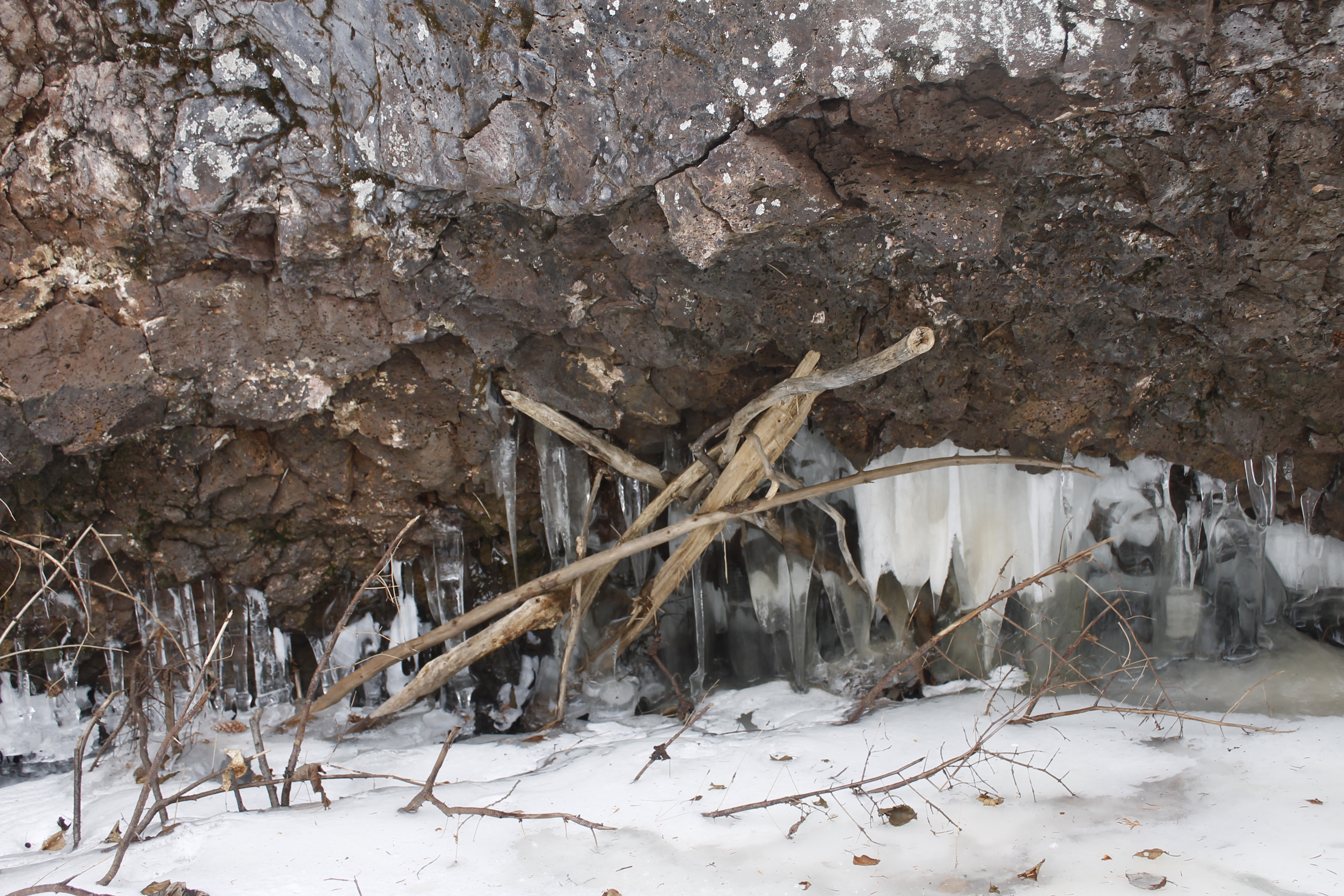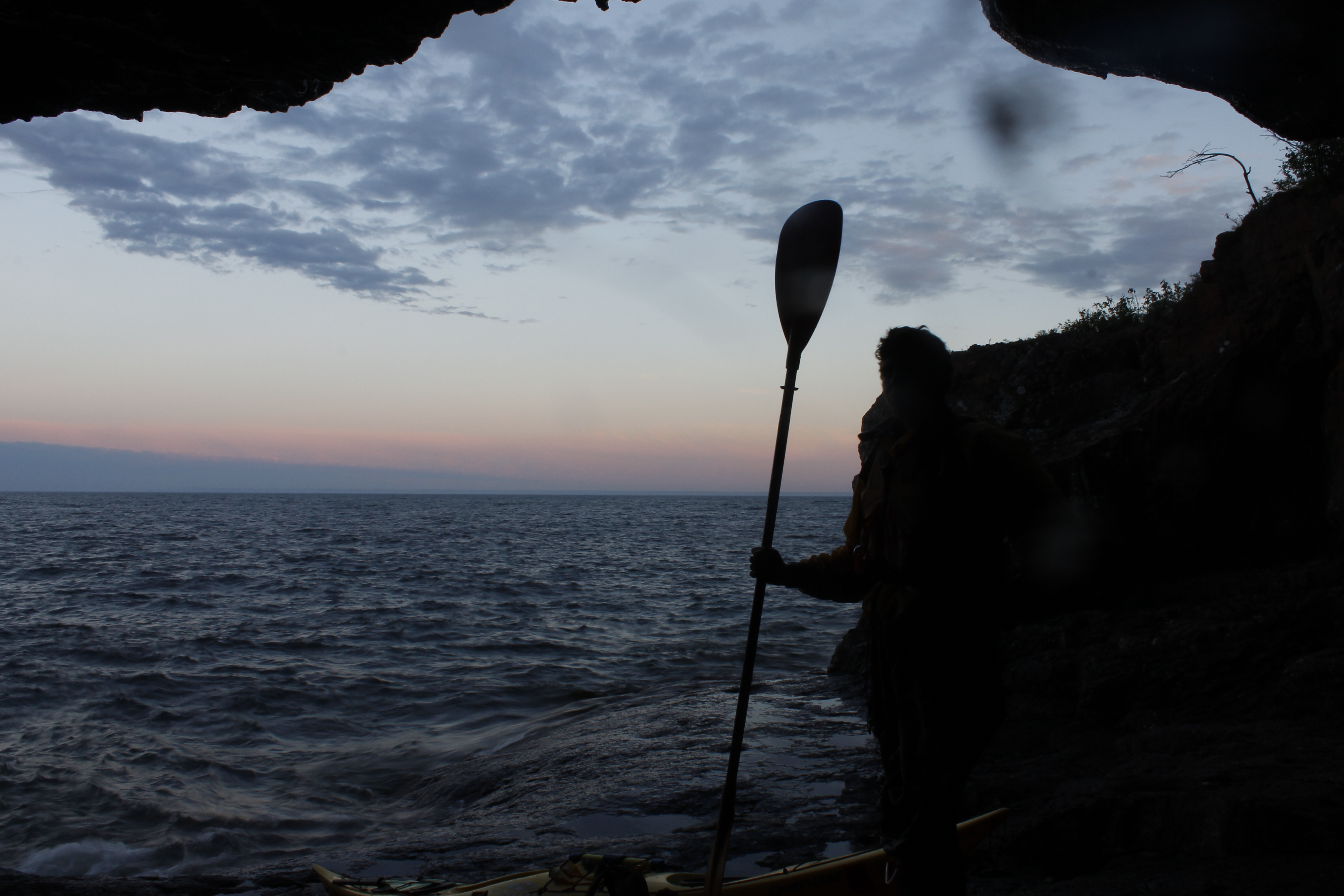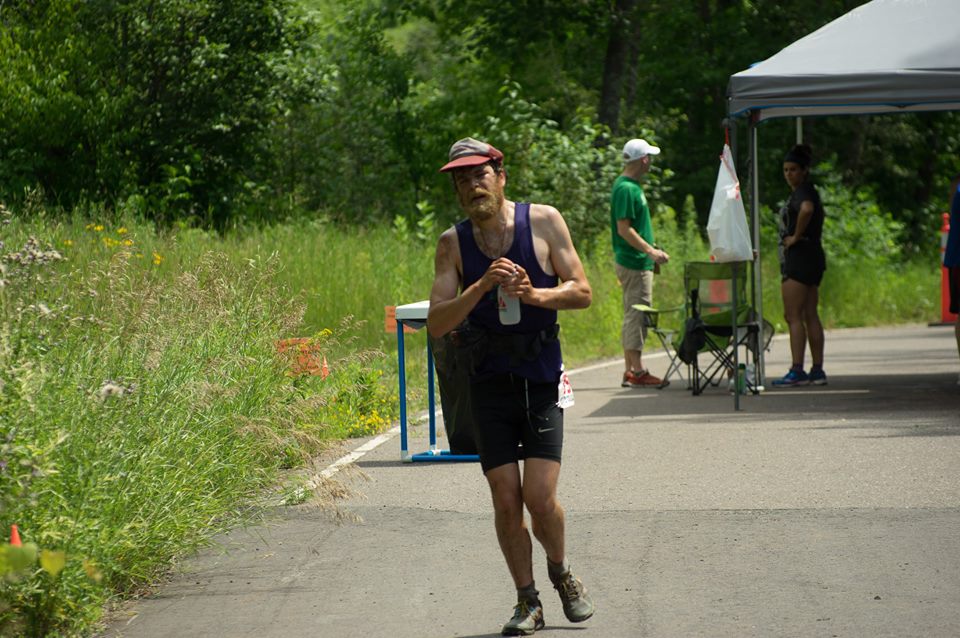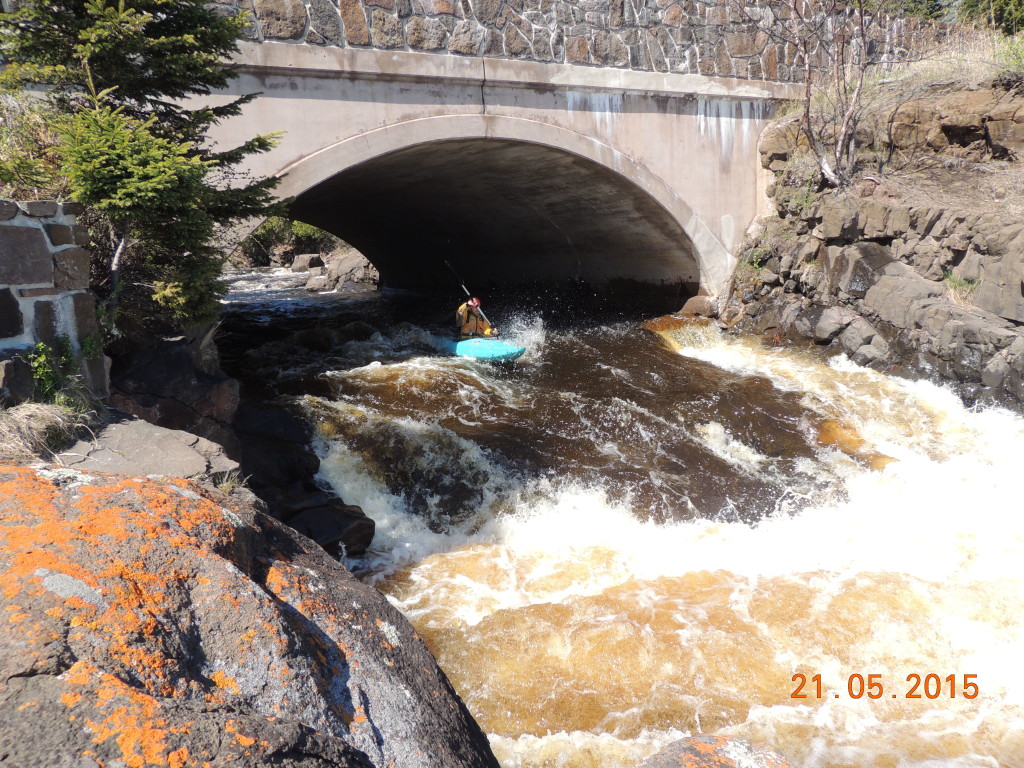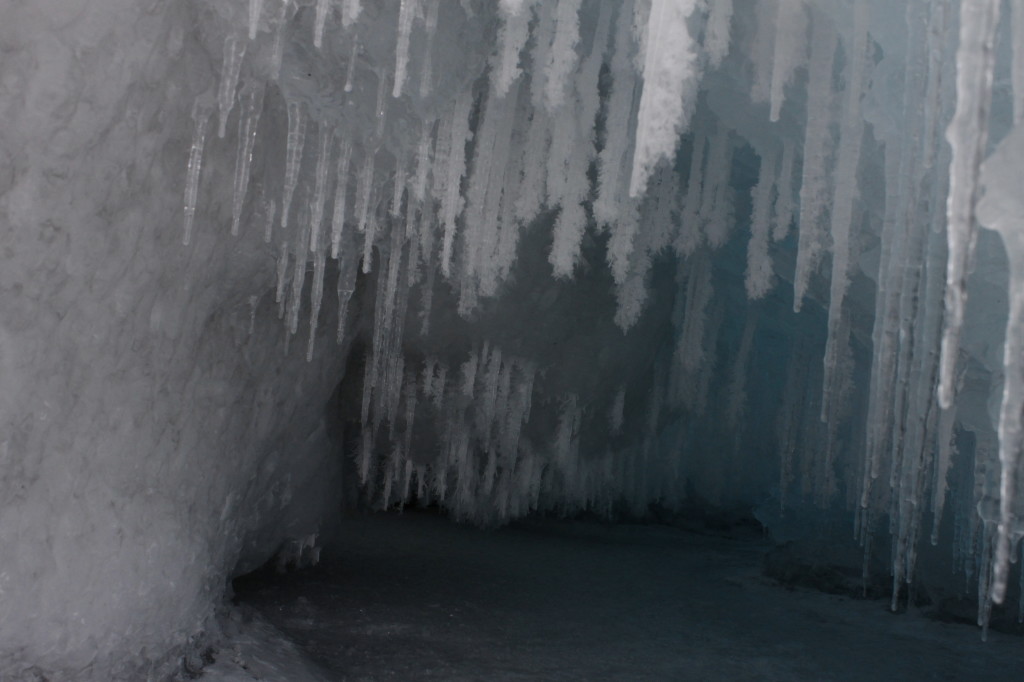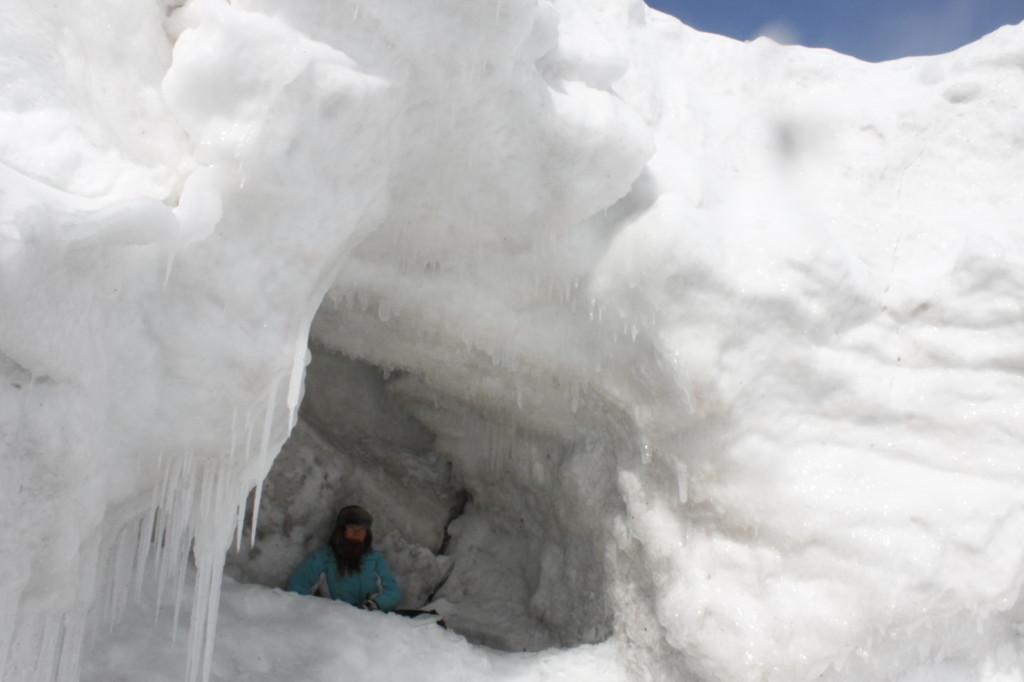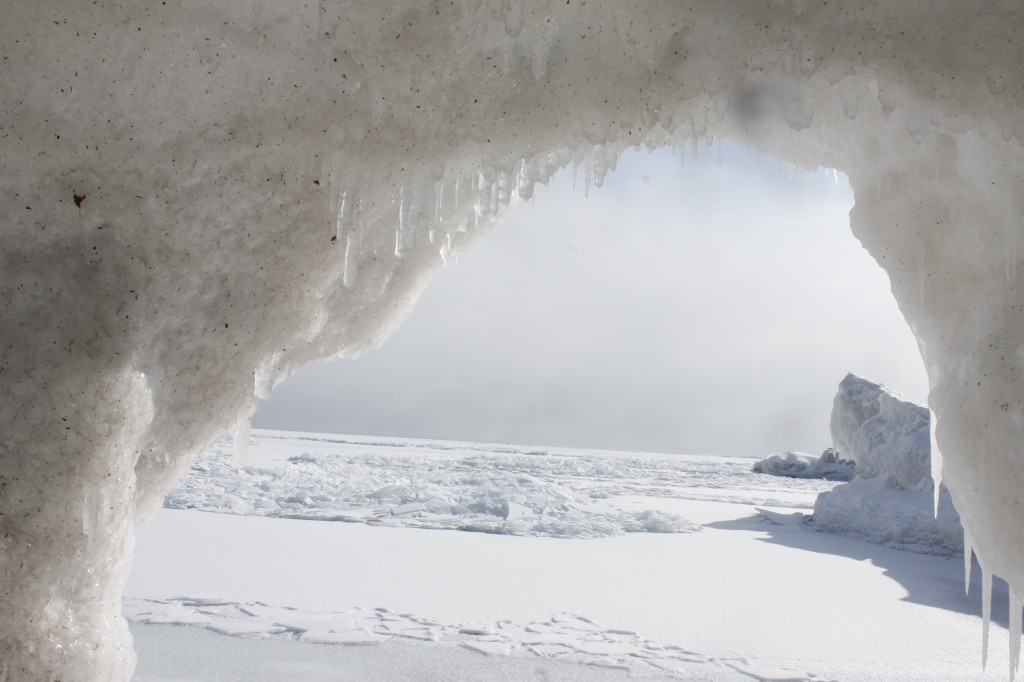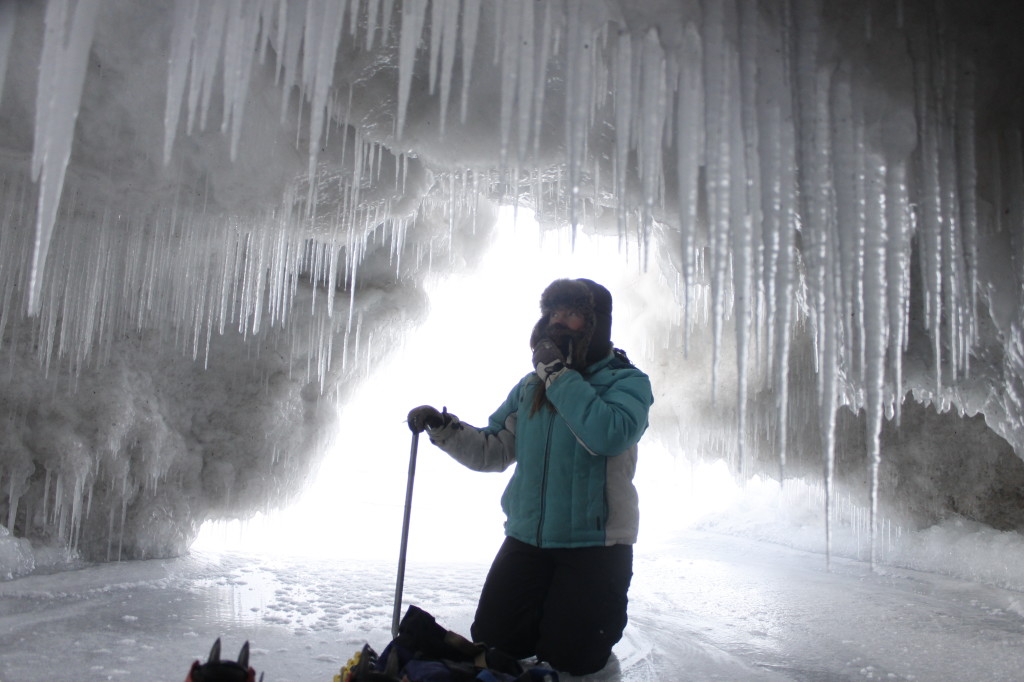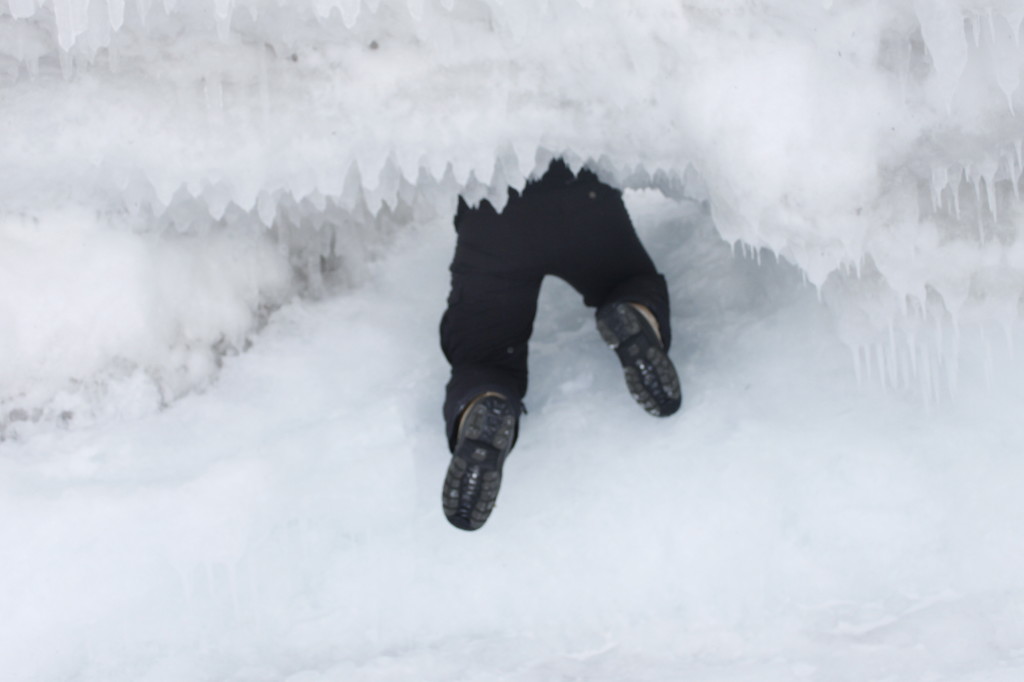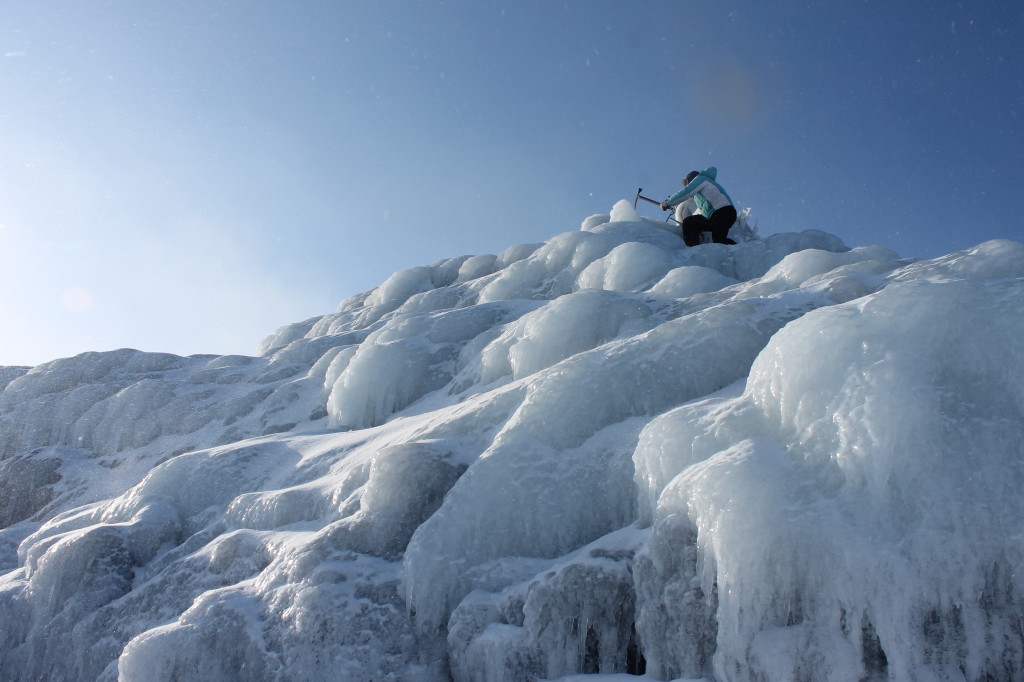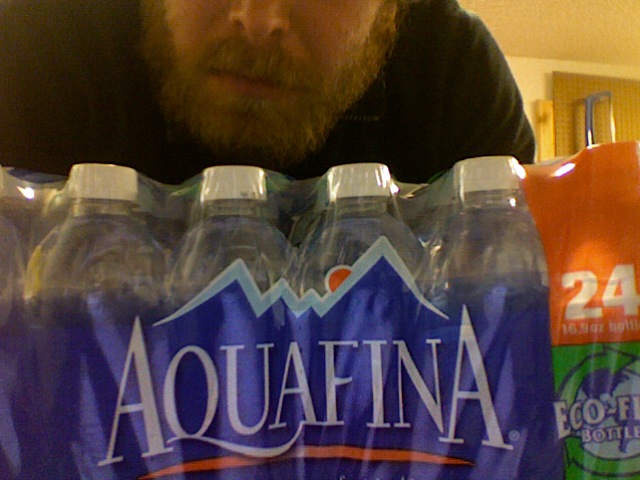I’m back out on the steely gray waves, looking to do some surfing in my whitewater kayak.
Dark clouds roll over Lake Superior, threatening more storm winds, or that the light drizzle falling now could become a downpour. The Weather Service has issued a small craft advisory.
I slop my way over four-foot rollers, staying well away from the rocky coast where the swells release their energy in detonations of foam and spray.
The buildings near my launch beach get smaller as I paddle away and become a part of the undulating waterscape.
My goal is a certain submerged ledge, about a third of a mile away. Even at a distance, I can see how the waves build on top of it, changing from round to angular, gaining height and breaking over themselves. The waves above the ledge behave similarly to the way that they would if they were coming into a beach, but because the ledge drops back into deeper water nearby, I will theoretically be able to cruise out of the break zone before the waves finish their kamikaze-run onto a nearby rock shelf.
I approach the feature with caution, observing from a distance where the waves start to break, looking from a couple of different angles. One of my favorite views of surf is from out on the water looking toward shore. The water climbs, loses its balance, falls over itself. Taut lines crease the water’s surface like cables trying to hold up the behemoth, but to no avail. It gives up its ghost in a beautiful spray of bubbles shooting upward through the water as the wave collapses.
It’s all to easy to be mesmerized and drift too close, inadvertently taking a part in the drama, when the next act starts building up from behind.
My precautions include the whitewater helmet on my head. There is also a bilge pump and paddle float inside the boat, which would be my best hope of getting back in the kayak should I flop over far off land.
When I am finally confident in my survey, I get in front of the underwater ledge and look behind me for a good wave.
The key is to match the momentum of the oncoming swell at the moment that it starts to lift the rear of the kayak. I paddle hard for one wave, but it’s moving faster than me, lifts my boat and trucks on past. That’s OK, because I got a momentum boost, which sets me up perfectly to catch the next wave.
The rear of the boat rises up; I ride down its slope like I’m a kid on a sled. The wave is curling over behind me, dropping the kayak nose toward the abyss. I lean back to counteract, paddle like hell to get out of there before everything breaks on top of me.
KAH-WHAM!
The wave explodes and the kayak flies forward on a carpet of churning foam. The rock outcrop looms in front of me, but I’m already oriented well to the right of it.
I lean on the right side and let the edges of the kayak help me carve away from danger. As soon as I’m spun around, I’m climbing on top of swells. I’m away from the ledge now and the waves aren’t breaking, thank God. It was a nice run. I wonder if I can do better.
I get back in front of the ledge, scan the waters for a new monster.
Big waves often come in successions. If there is one big wave, chances are another one is right behind it. I start paddling to catch the first wave in one of these chains, almost nab it, but not quite. I see the bubbly streamers go up beneath the kayak’s nose as the kayak tilt’s back in the wave’s trough. Better luck next time, old chum.
I look behind me to see who’s next. It’s the first wave’s big brother, riding high and already pitching forward at a steep angle. It is not good that I have lost speed.
“Shit.”
I paddle forward hard as the rear of the boat tilts upward. There is immediate, awesome acceleration. If I can get in front of this, it could be my best ride yet. The boat is plunging down, 70 degrees, 80 degrees, 90 degrees — the Uh Oh Moment.
The world goes turquoise as the back of my kayak flips over like a falling domino. Water and bubbles are rushing past my ears. I’m still shooting forward, still surfing the wave, but upside down now.
I make a desperate attempt to set up an Eskimo roll, realize that a paddle blade is missing. I flip the paddle around and try again, but am too disoriented and uncoordinated to roll worth a damn. The spray skirt is already coming off the cockpit.
Finally, I give up and pop out from the boat. I curse the paddle, a take-apart, which I’d dropped $130 on last month. While it has been convenient being able to separate the paddle in two pieces for transportation, the paddle has not been so hot at staying together — a rather important task.
Bobbing in the freezing water, I take stock of where I am in relation to the breakers. Fortunately, I am slightly outside the break-zone so I can bob up and down on the waves rather than getting thrashed inside them. I scan the water for the other half of my paddle, then I realize that the paddle didn’t come apart, it broke. The paddle end was snapped right off.
Once I get the kayak flipped over, it is completely filled with water, above the waterline only thanks to the air bladders within it. I reach to undo the bilge pump from its tether, decide it would be faster to kick the boat into shore and empty it there. My limbs are already getting cold. I kick hard with my legs to move myself and the hundreds of pounds of boat through the water, while I use my free hand to work the paddle. The confusion of waves makes it hard to gauge what, if any progress I’m making. I find myself dipping my head below the water for one wave that threatens to curl over, then I go back to thrashing and kicking.
At last, I feel the stony lake bottom beneath my feet so I can walk the boat the rest of the way toward shore, tilting water out of it as I go.
I had really gotten rocked, I think, laughing at how thoroughly the wave had overcome my feeble attempts to stay upright. Oopsy-daisy!, And there goes the tiny boat with me inside, ass over teakettle.
I empty the rest of the water out, scanning the water for the missing paddle blade. No sign. I walk out onto the overhang where the waves are breaking and look upon at the frothing carnage breaking against shore.
I smile, thinking of how I was completely owned, dominated, wrecked, rocked, by that wave. I don’t know why it should be so amusing, but it is. This could partly be a perversion of the fear response.
Then again, there is always something funny about the little guy making a stand and getting crushed. It reaffirms the cynic in us who never really believed the David and Goliath story, who got tired of everyone telling us to take risks — as if they weren’t speaking from inside protective bubbles of security and wealth.
Why were those “Messin’ With Sasquatch,” ads that came out a couple years back so satisfying? Because it’s fun to see some cocky little twerp try to strut and then get shut down, by Big Foot, no less.. One of my favorite scenes from Monty Python’s “The Meaning of Life” shows a group of gangly schoolboys pitted in a rugby match against full-sized men. The bigger team crushes the little guys mercilessly and with obvious pleasure. Then one of the boys escapes the scrum and almost makes the end zone, only to be tripped by one of his sadistic teachers from the sideline. The student looks up from the mud with understanding on his face: Now I see how the world works.
We get such a vicarious thrill for watching larger forces take down resistance that our language is rich with words that communicate dominance. I’ve already used several of them. Now think of how many ways I can say my team won the game.
“We owned them!”
“Smashed them.”
“Stomped them down.”
“Kicked their asses.”
“Slammed them.”
“We made them our bitch.”
“Dominated them.”
… and etc.
Such words are infectious because they affirm a sense of invincibility. People use them in mundane situations, sometimes for the laugh, sometimes because histrionics can be a more or less reflexive way of speaking, especially when you want attention.
“I seriously owned those dishes in the sink.”
“This veggie casserole curb stomps all other casseroles.”
Casual violence adds panache to otherwise dull language. Overused, it risks boorishness or arrogance, the equivalent of having a conversation scripted for WWE.
That said, there is still something pretty funny about hearing it from the guy who got hit (I mean, provided it isn’t your best friend who just landed in a wheelchair.)
Knowing the story’s inevitable outcome by the time you’ve told us about your ski getting caught on a lump of snow only builds the anticipation. We’ve been there ourselves and we’re getting owned right with you.
Can a graphic account of someone being taken down by existential despair, weight-gain, aging, and an all-conquering cynicism about life be funny? Just listen a comedian like Louis C.K.. I laugh so hard that sometimes I can’t breathe.
Can I laugh at myself after the Sasquatch of waves flips my boat over like some cheap toy? Yes. And I’d laugh if it happened to you.
I get back in the boat and shove it off, using a pry stroke so that I can paddle on one side but keep the boat on a straight course. Having only one end of the paddle makes me more vulnerable out there because I can only play defense on one side at a time. I still make it back to the launch beach, OK, where I surf a medium-sized wave back onto the gravel.
Having come out of the ringer more or less unscathed but down a paddle, I can think about ways I can be better prepared next time. My next paddle will be more expensive and more durable. I’ll have a paddle float clipped to my life vest so that I can use it to quickly get myself back inside the boat and the bilge pump will be in a place where I can grab it instantly. I will add a tow line to my gear so I can swim to shore first without having to tow the kayak with me. I will practice my roll more, so that I can right myself even in trying circumstances and I’ll be extra vigilant in break zones.
When the next killer wave comes, things might go differently. I might ride it expertly, effortlessly, flying down the carnage like an epic, avenging angel. But even then, the universe will own the facts, the enduring truth that I can never change:
That wave made me its bitch.

